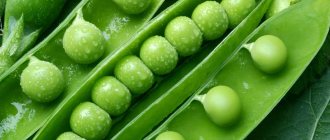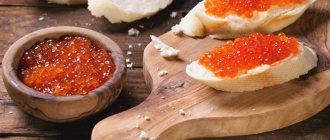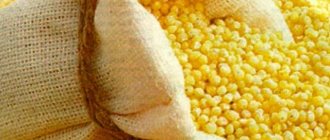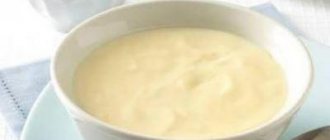Many modern mothers prefer to prepare porridge on their own, despite the huge assortment of ready-made baby food in stores. In fact, it makes sense. Firstly, you can use cereal and be sure that it has not undergone any preliminary and very dubious processing. Secondly, when preparing porridges, you can not add sugar, but use natural sweeteners. Thirdly, it significantly saves the family budget. In addition, not every child makes the choice in favor of store-bought cereals.
We offer you a short culinary “tour” of porridges - widespread and little-known.
Barley porridge
It is prepared from barley groats - crushed and peeled barley grains. Unlike pearl barley, which is whole but polished barley grains, barley contains significantly more fiber. At the same time, barley porridge is more tender and soft than pearl barley, which is why it is recommended for baby food.
Barley grains contain 11% protein, 4.5% fiber, 2% fat and 66% carbohydrates, and per 100 g of barley there are 353 mg of phosphorus, 12 mg of iron, 477 mg of potassium and 93 mg of calcium. Barley dishes are rich in vitamins A, B, D, E, PP and such important nutrients as iodine, bromine, copper, cobalt, folic and pantothenic acids.
Barley porridge contains a significant amount of phosphorus, which is indispensable for the absorption of calcium and brain function. It also normalizes chemical processes in the body and metabolism. The unique chemical composition of barley helps restore weakened vision. And due to the high content of amino acids such as lysine in barley, the risk of diseases such as influenza, herpes and other viral infections is reduced.
It is worth mentioning that barley grains are used as a powerful natural antibiotic and are used in the treatment of diabetes, diseases caused by weakened functioning of the urinary and gallbladder, liver, kidneys and arthritis. As experts assure, regular consumption of barley dishes helps normalize cholesterol levels in the blood, as well as improve performance.
Barley porridge can be safely introduced into a child’s diet after one year. It is worth adding that, unlike other cereals, barley contains the fewest calories. In this regard, it is included in diets to normalize weight and metabolism.
Barley porridge with milk
- Milk 200 g
- Barley 40 g
- Butter 10 g
- Water 50 g
- Sugar 20 g
Mix milk with water and bring to a boil. Add barley and salt. Cook over low heat, stirring constantly, for about 20-30 minutes, until the mixture becomes thick. At the end of cooking, add sugar and butter.
Benefits of barley porridge
With so many different grains to choose from, each with different health benefits and amazing properties, it can be difficult to make a choice. The not very popular barley porridge for children deserves special attention. Pediatricians recommend introducing this porridge into a child’s diet no earlier than two years. This is explained by the fact that barley is difficult for the baby’s digestive system.
You can prepare porridge from barley groats, which are presented in the form of peeled, crushed grains. It is slightly different from whole pearl barley. However, barley grains contain much more fiber and nutrients, which are essential for the normal functioning of the child’s gastrointestinal tract. Compared to pearl barley, yachka is much more tender, softer and more pleasant to the taste. It should definitely be included in baby food.
It is important to note that the grains contain:
- protein – 11%;
- fats – 2%;
- fiber – 4.5%;
- carbohydrates – 66%;
- vitamins – E, D, A, PP, A;
- phosphorus, potassium and iron, calcium;
- copper, iodine, cobalt and bromine;
- pantothenic, folic acid.
The chemical composition of barley is rich in phosphorus, which is necessary for the complete absorption of such an element as calcium. In addition, phosphorus ensures high-quality brain activity. There is a normalization of metabolism and other chemical processes occurring in the child’s body. Thanks to the huge amount of amino acids, for example, lysine, you can reduce the risk of developing many dangerous diseases. Basically, these are various viral infections, herpes, flu.
Barley porridge, prepared correctly, is recognized as a powerful and effective antibacterial agent. That is why doctors strongly advise eating it in case of diabetes, pathologies of the gallbladder, bladder, kidneys and liver. According to doctors, if you regularly eat dishes with barley, you can quickly normalize your cholesterol levels and increase your performance. It is better to introduce it into the baby’s diet at the age of one and a half to two years. A distinctive feature of barley porridge is its low calorie content, so it can be eaten even during a diet.
Millet porridge
Millet groats are millet grains, peeled from the shells, sometimes polished or crushed. This cereal is quite rich in natural fiber, amino acids and starch, and also contains vitamins A, B1, B2, B5 and PP complex and such important elements for the body as fluorine, phosphorus, magnesium, iron, potassium, etc.
Millet porridge helps eliminate heavy metals and toxins from the body, which indicates how useful it is for children with weakened bodies, children suffering from gastrointestinal diseases, and also living in areas with problematic ecology. Having a low calorie content, millet porridge is a dietary product, but at the same time it is capable of providing excellent strength and restoring the energy balance of the child’s body.
Millet porridge can be introduced into a child’s diet from the age of 1.5 years.
In order to cook millet porridge for a child, you first need to rinse the millet under hot water until the water becomes completely clear. And then soak it in water at room temperature for 1 hour.
Millet porridge with milk
- Millet cereal 30 g
- Milk 150 ml
- Water 100-150 ml
- Butter 10 g
- Sugar 5 g
Pour the soaked millet cereal into salted boiling water and cook until half cooked, stirring frequently. Heat the milk separately and pour into the porridge. Cook until done. At the end of cooking, season the porridge with sugar and butter.
You can diversify the finished millet porridge with grated fresh fruit (apple, banana) or add carrot, apricot or pumpkin puree to it.
Millet casserole with apple
- Millet 250 g
- Apple 150 g
- Butter 40 g
- Egg 1 pc.
- Milk 750 ml
- Sugar 20 g
- Oil for basting
Boil millet in boiled and salted milk. When the porridge is cooked, add heated butter, egg, peeled and diced apples, and sugar. Mix everything and place on a greased baking sheet. Place in preheated oven and bake for 40 minutes. Pour melted butter over the finished casserole.
The benefits of barley porridge for children
Barley porridge is healthy and nutritious. A large amount of protein will bring maximum benefits to a growing body. Porridge is a source of carbohydrates, which have powerful energy and antidepressant properties. It has a texture suitable for a child's delicate stomach, so it does not overload the digestive tract. But it is better to postpone the introduction of eggs into a child’s diet until 1.5–2 years.
Barley porridge is contraindicated for one year old children!!!
Reasons why barley porridge should not be given to children under one and a half years old:
- Barley contains large amounts of gluten.
It can be harmful because it is an allergen and is poorly absorbed by the body until a certain age. Barley porridge in a baby can cause an allergic reaction, bloating, and indigestion. - The abundance of fiber benefits only adults.
Young children experience stomach pain due to gas when eating fiber-rich foods.
When adding barley porridge to a child’s diet, follow the same rules as when introducing other products:
- for the first time, a very small portion is enough - 1 teaspoon;
- at the very beginning, do not cook very thickly;
- do not add other ingredients to the porridge until the tolerance test has been passed;
- closely monitor the child’s condition for 24 hours after eating the porridge;
- If traces of an allergy appear: redness, itching, upset stool, stop eating barley porridge and consult a doctor.
Rice porrige
Rice is absolutely free of gluten, a vegetable protein that can cause an allergic reaction, which is why it is so useful for young children, since their gastrointestinal enzyme activity is not yet fully developed. Research Institute of Nutrition of the Russian Academy of Medical Sciences, rice porridge is recommended as a starter in the nutrition of babies. Rice porridge can be introduced into a child’s diet starting at 6 months.
Rice contains a lot of potassium and lecithin, which is known to activate brain activity well. This cereal is also an important source of B vitamins - B1, B2, B3 and B6, thanks to which the nervous system is properly formed and strengthened.
It is important to know that rice has an antitoxic and diaphoretic effect in the treatment of sore throats, pneumonia and influenza. It perfectly restores strength and appetite after illness, improves sleep and calms the nervous system.
The substances that rice possesses are able to coat the stomach, so it is very useful to eat it for children suffering from gastrointestinal diseases, with high stomach acidity, with excessive regurgitation and lack of weight. But for children who suffer from frequent constipation and who suffer from colic, rice should be given less often or, at the insistence of a specialist, should be excluded altogether.
To prepare rice porridges for young children, it is better to use round polished rice. Before cooking, sort out the rice grains and rinse them in warm water, changing the water 6-7 times.
Rice porridge with milk
- Rice 30 g
- Water 50 ml
- Milk 150 ml
- Sugar 10 g
Pour boiling water over the rice and cook until half cooked, add hot milk and cook until fully cooked. Towards the end of cooking, season the porridge with sugar, salt and butter.
You can add fruit, jam, berries or any vegetable or fruit puree that you usually offer your child to the finished porridge.
Rice pudding with egg
- Rice 3 tbsp.
- Egg 1 pc.
- Milk 100 ml
- Butter 10 g
Pour water over the washed rice and cook until tender (about 25 minutes). Heat the milk, add to the rice and bring to a boil. Beat the egg, add it to the rice porridge and stir. Place the resulting mass in a mold greased with butter. Bake the pudding in a preheated oven (180°C) for 15 minutes. In addition to the egg, you can add 15-20 g of washed raisins to the pudding before putting it in the oven.
Barley porridge for children, recipes
Good to remember
: when cooked, barley porridge increases in volume 4 times and it is advisable to cook it for 45-50 minutes.
Barley porridge with milk
For 200 g of barley porridge with milk, we will need:
- milk - 150-200 g;
- barley - 40 g;
- sugar - 20 g;
- water - 50-10 g;
- butter - 10 g;
- salt - to taste.
We prepare barley porridge with milk for children like this:
Pour barley into a boiling mixture of water and milk and add a little salt. Cook, stirring constantly, for 20-30 minutes over low heat until thickened.
Add sugar before finishing cooking. Place the butter into the prepared barley porridge.
Barley porridge with milk and pumpkin
For milk barley porridge (for children over 8 months) with pumpkin, we will need:
- milk - 200 g;
- barley groats - 4 tbsp. spoons;
- pumpkin - 100 g;
- butter - 1 teaspoon;
- salt - to taste.
We prepare barley porridge for children with milk and pumpkin like this:
Place the washed barley in a saucepan and place it over high heat. After the water boils, reduce the heat to the lowest setting and cook for 25 minutes (salt for children over one year old).
Wash and peel the pumpkin from seeds and peel, then cut it into small pieces.
As the child grows up, all mothers wonder about complementary feeding. For the full development of the baby, various cereals need to be introduced into his diet. One of them is barley. To answer the question about at what age can a child be given barley porridge, you should read the following information.
Cereals contain a large amount of vitamins necessary for the body: A, B, E, PP, D. It also contains a sufficient amount of fiber (6%) and useful elements: calcium, potassium, bromine, iron, phosphorus, iodine.
Yachka dishes help remove toxins from the body and cleanse the intestines.
Cereals are useful for the following properties:
- hypertensive patients eat dishes made from barley because of its mild diuretic effect;
- due to the high fiber content, eating porridge does not contribute to the addition of extra pounds, despite the fact that the cereal is high in calories;
- systematic use of porridge as food is an excellent preventative against arthritis and helps increase the strength of joints;
- Persons with diseases of the gastrointestinal tract will benefit from a decoction based on barley groats. It envelops the stomach and has anti-inflammatory and antispasmodic effects.
But you should be careful when giving barley porridge to children due to the fact that:
- it can cause an allergic reaction in children due to the gluten content, moreover, because of it, the egg is very difficult to break down in the child’s body;
- The porridge will take a long time to digest in the child’s stomach due to its high fiber content. Eating egg often leads to pain in the abdomen and bloating.
Buckwheat
Buckwheat is rich in iron, magnesium, calcium, folic acid and phosphorus. Contains 2 times more fiber and 5-7 times more vitamins B1 and B2, mineral compounds and rutin than other cereals. It also surpasses other cereals in terms of the content of highly soluble and balanced protein with amino acids.
Buckwheat porridge is easily digestible by the child's body and does not cause constipation. Recommended for children with low levels of hemoglobin in the blood (anemia) and pregnant women during toxicosis. Buckwheat promotes the proper development of the brain, nervous and skeletal systems, normalizes digestion, strengthens capillaries, improves overall fat metabolism and increases the body's resistance to many diseases.
Buckwheat porridge is ideal as a first food for children, as it is low-allergenic and does not contain gluten. It is recommended to prepare this porridge for children from 6-7 months, grinding buckwheat in advance in a coffee grinder. Children from one year old can prepare porridge without preliminary grinding.
Buckwheat
- Buckwheat 1 cup
- Water 2 glasses
- Butter ½ tsp.
- Salt ½ tsp.
Dry the sorted and washed buckwheat a little and fry until golden brown in a dry frying pan over medium heat. Melt the butter in a pan for cooking porridge, pour the cereal into it and mix well so that it absorbs the oil. Then add salt, pour boiling water and cook under the lid until tender over low heat.
Corn porridge
Corn grits contain vitamins B, E and provitamin A (kerotene). Corn porridge contains a lot of fiber, which helps remove radionuclides and toxins from the body and stimulates intestinal function. This porridge is useful for babies who suffer from constipation, as it can inhibit the processes of fermentation and putrefaction in the intestines. This porridge is well and easily absorbed by the child's body, does not contain gluten and is therefore safe for children with allergies.
Corn porridge can be offered to a child as early as 9 months, if the finished porridge is pureed in a blender.
Corn porridge with milk
- Corn grits 200 g
- Milk 150 ml
- Butter 5 g
- Sugar 5g
Rinse corn grits in cold water. Pour in cold water and cook until tender. Grind the hot porridge using a blender, add hot milk and bring to a boil. Season the finished porridge with butter and sugar.
Corn porridge with prunes
- Corn grits 1 tbsp.
- Milk 100 g
- Water 100 g
- Prunes 5 pcs.
- Butter 15 g
- Sugar 15 g
Rinse the prunes and boil in water. When it has completely cooled and swelled, remove it from the broth and grind it in a blender. Add prune decoction to 100 ml with water, boil and add corn grits. Cook for 15 minutes, then add sugar, salt, milk and cook over low heat for another 15-20 minutes. Season the finished porridge with oil.
Barley porridge recipes for children
On the water
- Cereals – 1 cup;
- Water - 4 cups.
We wash the grains and fill them with water. You can add salt to taste, but it is better to cook without adding spices. Bring to a boil, stir and reduce heat. Cook for another half hour, stirring occasionally. Then let it sit under the lid for another twenty minutes. Barley porridge with water without salt and without sugar is suitable for first feeding. For taste, you can add a little vegetable or butter or breast milk.
With milk
- Cereals – 1 cup;
- Water – 2 cups;
- Milk – 1 cup.
We wash the barley grains and fill them with cold water. After boiling, reduce heat and cook until thickened. Then pour in the milk and stir, bring to a boil again and cook covered for three minutes. Let the porridge brew for another ten minutes.
Milk porridge turns out tasty, aromatic and rich. For older children, the dish can be supplemented with dried fruits or nuts, fresh fruits or berries, honey, homemade jam or jam. But remember that the components should not cause an allergic reaction.
With pumpkin
- Pumpkin – 1 medium-sized fruit;
- Cereals – 100 grams;
- Olive oil – 1 table. spoon;
- Greens to taste.
Wash and cut the pumpkin, remove peel and seeds, cut into slices or circles. Place the vegetable in a baking dish and brush with olive oil, salt and pepper if desired. Bake for ten minutes at 180 degrees. Separately cook barley porridge.
Place the baked pumpkin on top and sprinkle the dish with fresh chopped herbs. By the way, the dish can be decorated with orange slices. This citrus, oddly enough, goes well with barley. Both components can often be found in common recipes.
With sour cream
- Cereals – 200 grams;
- Milk – 0.3 liters;
- Egg – 1 piece;
- Sour cream – 2.5 tables. spoons;
- Butter – 60 grams.
Soak the cereal in cold water for half an hour, rinse and add to boiling milk. Add ten grams of butter and salt to taste. When the porridge thickens, transfer it to a baking container. Add sour cream and break the egg, mix thoroughly. Cut the remaining butter into thin pieces and place on top. Bake for seven minutes at 175 degrees.
Semolina
Semolina contains a lot of starch and gluten, and children under 2.5 years old do not yet produce the enzyme that breaks down this protein. Semolina also contains phytin, a substance that interferes with the absorption of vitamin D and calcium by the child’s body. Eating this product can lead the child’s body to disruption of the gastrointestinal tract, rickets, and frequent colds.
This does not mean that semolina porridge should be excluded from the child’s diet, but its frequent use should be limited. It is not recommended at all to give semolina porridge to children with allergies and children under the first year of life.
Semolina porridge with milk
- Semolina 25 g
- Milk 200 g
- Butter 5 g
- Sugar 5 g
Bring the milk to a boil and add semolina in a thin stream with continuous stirring. Cook the porridge over very low heat for 10-15 minutes, stirring constantly. Season the finished porridge with butter, beat with a spoon and add sugar.
Oatmeal
According to children's nutritionists, oatmeal can be given to children as young as 6 months old. Children who consume oatmeal from this age suffer less from gastrointestinal diseases and are less likely to suffer from asthma in the future.
Oatmeal contains a lot of protein and magnesium, as well as B vitamins, phosphorus, potassium, iron, lecithin, and linoleic acid. But most importantly, it contains a huge amount of fiber and fats of plant origin, which are so necessary for a child’s complete nutrition. Oatmeal stimulates metabolic processes, restores and moisturizes the gastric mucosa, perfectly helps in the fight against dermatitis, improves the condition of the skin and hair.
Oatmeal with milk
- Oat flakes 30 g
- Water 100-150 ml
- Milk 150 ml
- Butter 10 g
- Sugar 5 g
Sort out the oatmeal, rinse and add to salted boiling water. Cook over low heat until the water evaporates. Then pour hot milk into the porridge and bring to readiness. Add butter and sugar to the prepared porridge.
By the age of 1, many changes occur in a child’s body. His first teeth appear, his digestion changes, and chewing skills develop. The enzyme component of digestion changes, allowing it to cope with solid food, which is why the child is being rebuilt. A new 4-times-a-day diet appears, new products are added, and their quantity increases. With the advent of new menu components, nutrition becomes more complete. An invariable component of the children's menu is porridge, and their quantity grows with the child. However, not only the cereals themselves are important, but also the methods of preparing them, because most likely your child has already managed to form an attitude towards certain dishes and craves new tastes. Below, we will consider what new cereals can be introduced to children over 1 year old, as well as various methods of preparing them.
What are the benefits of cereals?
Cereals are a valuable food product that is a source of complex carbohydrates. Products in this group are a source of energy and also give you a feeling of satiety. Cereals also contain proteins, fats and carbohydrates, along with vitamins and minerals. There are a lot of microelements in cereals, such as calcium, magnesium or iron.
Each type of cereal has its own benefits and characteristics. For example, buckwheat is considered the most valuable due to the absence of gluten and high content of proteins, fats, iodine, iron and other microelements. In the group of gluten-free cereals, rice and corn occupy an important place. Rice contains beneficial components to a lesser extent, but serves as an excellent nutritional component of the diet and is well absorbed by the intestines. Corn grits are healthier, they contain components useful for the structure of the body, they are as easily digestible as rice, but they take a long time to cook.
Oatmeal ranks second in terms of value for the body of a one-year-old child. At the same time, not only oatmeal itself is useful, but also other by-products based on this cereal. It is worth noting the abundance of vegetable fats, coupled with phosphorus, potassium, vitamins E and B and a number of other useful components. Due to the gluten contained in pure oatmeal, porridge may be difficult to digest, so it is worth purchasing processed oat products.
Barley and pearl barley are a product of barley processing. The abundance of microelements and satiety of the product makes it an excellent alternative for a child’s lunch or morning menu. Among the disadvantages, it is worth noting that they are difficult to digest, so there should not be too much of such cereals in the diet.
Finally - semolina. Despite popular opinion, such cereals are less useful than the options listed above. Undoubtedly, semolina contains enough microelements and vitamins, plus it contains a lot of protein and starch, so the child gets full very quickly. But some advantages can also be significant disadvantages. For example, frequent consumption of semolina leads to rapid weight gain, and gluten can cause intestinal upset.
However, not all cereals are equally healthy. Some parents give children millet from 1 or 1.5 years of age. This cereal is not on our list. Since it can be quite harmful for the baby. First of all, millet is a fairly coarse grain, so it is difficult for a 1-year-old child to chew it. This feature also leads to digestive problems. Finally, after heat treatment, a very modest amount of vitamins and microelements remains.
What porridges can be introduced from one year onwards?
Cereals are an integral part of children's diets, but in order for them to be beneficial, they should be introduced only at a strictly designated time. So the first porridge for a child, at the age of about 6 months, becomes buckwheat, rice or corn. This choice is due to the absence of gluten, which means the new food will be easier to digest for a fragile digestive system. Next, oatmeal is added as complementary food.
Porridge for a one-year-old child may already contain gluten and be coarser than before. At this age, the baby begins to be given semolina porridge. It is perfect as a nutritious meal for a fast-growing body. Also at this age you can start giving heavily boiled wheat porridge.
In some cases, after one year of age, children can begin to be given barley and pearl barley porridge. In total, the baby’s diet contains at least 8 different cereals. Thus, the child has access to almost all basic cereals, which are easily digestible and contain many useful components. This is also a plus for mom, who has plenty to choose from when creating a menu.
Note. If you are giving your child porridge for the first time, then it makes sense to use a ready-made product for this. The ready-made or soluble mixture has a delicate texture, is prepared from high-quality cereals and therefore fully complies with sanitary standards, plus it is easily accepted by the baby’s intestines. The exception is products with flavoring additives; it is better not to buy such products, as they can become a potential source of allergic reactions.
Introducing barley porridge into a child’s diet

- The okroshka in question goes well with milk, dried fruits, fruits and berries. Therefore, this first thing will be an excellent healthy breakfast for an actively growing body. Experts assure that the presented product is best introduced into a baby’s diet from the age of 1 year.
- If at the age of one the child still regularly experiences colic or flatulence, then it is better to postpone the introduction of porridge into the diet until 2 planning. For the first time, give the product in an amount of more than 0.5 tsp. This will allow the body to adapt to the new composition.
- Before giving porridge to your baby, pass the raw material through a coffee grinder. Because of this action, it will be easier for a weakened digestive system to digest food. Boil the outcome in water, do not add anything extra. It is also not recommended to include sweeteners.
- Please note that during this period it is prohibited to introduce new products. At this time, you must find out whether the child’s body accepts the juice normally. Therefore, after getting acquainted with the product, monitor your child’s reaction. It is extremely rare for an allergic reaction to occur. Most often there is itching, redness, flabbyness, and abdominal pain.
- If you notice such manifestations, stop giving the porridge to your child. In the absence of such manifestations, it is allowed to re-offer the work to the baby after 2 days. This time the child is allowed 1 tsp. product. Each time, increase the portion that is prescribed according to age. You are allowed to include porridge on the menu only twice a week.
Children's porridge recipes
Properly prepared porridge, first of all, must be completely cooked; this is why it is worth familiarizing yourself with the cooking time:
- buckwheat – 30–45 min,
- millet – 45 min,
- oatmeal 20–25 min,
- rice 30–40 min,
- semolina 15 min.
Buckwheat
To prepare, we will take the standard proportions for preparing porridge, that is, 1 tablespoon of cereal flour and a glass of water/vegetable broth/milk. Flour should be poured with half a glass of water and let sit for about 5 minutes. Then add the remaining liquid and put on fire (you can add a little salt). Cook the porridge over low heat until thickened. After cooking, oil is added to the porridge.
Rice porridge
Just like for buckwheat porridge, we will use flour; you can make it yourself by grinding washed and sorted grains in a coffee grinder. The proportions are still the same - 5 grams of flour (1 tablespoon) per 100 grams of liquid.
If a child actively chews, then there is no point in turning porridge into flour. Therefore, take 2 tablespoons of rice and cook in 2 glasses of water. After 40+ minutes of cooking, the rice will be cooked enough. As a last resort, if this consistency is not suitable, grind the finished porridge with butter in a blender.
Corn porridge
This time the proportions are slightly changed, we will need 1 glass of water per 2 tablespoons of flour. We put the flour not in cold, but in boiling water, then wait until the liquid boils and quickly mix everything until smooth. Cook the dish for about 15 minutes, and then let it sit a little.
Advice. Corn grits should be cooked immediately before eating. Cooled or cold cornmeal porridge is dry and hard.
Oatmeal porridge
For the recipe, take a glass of milk, two glasses of water and 2 tablespoons of Hercules porridge. Like corn grits, this grits is placed in boiling water. Cook the oatmeal over low heat for about 20 minutes, then remove and add milk. If you need to achieve a more uniform consistency, then rub the boiled porridge through a sieve and only then add butter and milk.
Semolina porridge
Take a glass of liquid (milk or water), a tablespoon of cereal, 1⁄2 tsp butter. Bring the liquid to a boil and pour a spoonful of cereal into it. Immediately stir the porridge thoroughly and continue stirring until the cereal is cooked. Turn off the heat, add oil and let the dish sit for 15 minutes.
As you can see, preparing most cereals is very simple and does not take much time. The presented recipes are quite simple, so to diversify the taste of the dish after cooking, you can add pureed fruits, dried apricots, prunes to the porridge, you can also mix the porridge with meat or vegetable puree. Don't forget that you can add a little salt as you get older. Another way to diversify the taste of porridge is to cook it together with vegetables, for example, porridge with pieces of pumpkin or carrots may please your baby much more than usual.
Remember! All porridge additives that you use in cooking should be previously tested separately from the porridge to eliminate the risk of allergies to unfamiliar products.
- Regardless of the type of cereal, it must be carefully sorted before cooking.
- If the cereal contains pests or a pronounced foreign odor, it is not suitable for cooking.
- All cereals (except crushed) should be thoroughly washed before cooking.
- Stainless steel utensils are best suited for cooking, since porridge burns in enamel containers, and aluminum releases toxins.
- The first prepared porridge should be heavily boiled and cooked in water or vegetable broth.
- Immediately before cooking, the cereal can be ground in a coffee grinder, so it will cook faster.
- Instant cereal is boiled for about 3 minutes, then left covered for up to 10 minutes. When the baby begins to actively chew for cooking, you can use the instructions on the package and simply steam the porridge.
- It is not advisable to boil milk for a long time, so it is added to the dish after cooking. You can also use milk diluted 1k1 with water, and after absorbing the liquid, cook the porridge over very low heat.
- Oil is added only at the end of cooking.
Which cereals are better to choose: homemade or store-bought?
This depends on several factors: the baby’s taste preferences, the mother’s financial capabilities and whether she has time to prepare the dish.
Arguments for buying porridge in bags:
- most of them are hypoallergenic (do not contain gluten, sugar, preservatives, milk components);
- they are enriched with vitamins (however, many mothers do not consider this beneficial, since all vitamins are chemically produced, and therefore choose a product without additives);
- prepare them conveniently and quickly;
- The ready-made store product has a liquid consistency, which is suitable for children under one year old.
Arguments for homemade porridge:
- the composition of the dish is formed by the mother herself (there are no questionable components, you can add the necessary ingredients at your discretion);
- inexpensive in cost;
- they have a longer shelf life than store-bought products;
- The thicker consistency of homemade porridge promotes the development of the child’s chewing muscles.
Useful properties of cereals
Gluten-free cereals
The safest because they do not contain vegetable protein gluten and are suitable for feeding the youngest (from 6 months).
- Rice.
Rich in carbohydrates, which are well absorbed by the body. - Buckwheat.
Contains B vitamins, iron, magnesium, zinc, copper. Improves the functioning of the digestive system due to the large amount of fiber. Due to its rich iron content, it reduces the risk of anemia in a child. Prevents constipation and effectively removes harmful substances from the body. - Corn grits.
It contains a large amount of vitamins B, A, E, PP, iron, starch. It helps improve intestinal function, helps eliminate flatulence and colic. - Millet.
It contains a lot of fiber, protein, B vitamins, PP, zinc, potassium, and iron. Positively affects the functioning of the circulatory system and liver, removes toxins.
As the baby grows up, it’s time to gradually accustom him to more “adult” and varied foods. Suitable for children from 8 months.
- Oatmeal
is a valuable source of phosphorus, calcium, vegetable protein, fiber, vitamins B1, B2. Helps strengthen bones and teeth, has a beneficial effect on the functioning of the nervous system. - Barley cereals (barley and pearl barley)
contain vitamins B, A, E, PP, potassium, calcium, iron, and fiber. Porridge helps remove harmful substances from the body, improve the functioning of the digestive system, and strengthen the immune system. Helps cope with allergies. - Wheat groats.
Stimulates metabolism, improves the functioning of the gastrointestinal tract, removes harmful substances from the body. - Semolina.
It is well absorbed, rich in vitamins B, PP, vegetable protein and starch, which give the body growth and energy. Porridge is very filling and high in calories.
How to cook porridge for babies
The cereal must first be washed and dried. Before cooking, grind in a coffee grinder or blender. Then pour it into cold water (for example, rice or buckwheat) or into boiling water for cooking.
Cook the porridge over low heat, stirring constantly. Cooking time depends on the type of cereal. To give the porridge a brighter taste, you can combine it with vegetables (pumpkin, broccoli) and fruits (apples, pears, bananas).
Once ready, you can add breast milk or formula, vegetable or fruit puree. Until 1 year, salt and sugar are not added.
Note: it is better to give porridge from a spoon, as this is food close to adult food. When a child eats it from a bottle, the product does not have time to be properly wetted with saliva.
Porridge is a valuable product that affects the full development and gives energy and strength for the growth of the baby. Let your diet become healthier and more varied with them!
And, but also properly prepared crumbly barley porridge. It can be made in a slow cooker, double boiler, microwave, or in the usual way with meat, water or milk.
But what you add to barley porridge is not particularly important, because it will already be tasty and healthy. Barley itself is considered a natural “antibiotic” and contains hordecin, which helps suppress skin diseases. It is believed that barley decoction will help with coughs, colds, cope with constipation and is useful for diabetes. All these properties apply to cereals, which is why men, women and children should eat it at least a couple of times a month.
How to cook barley porridge for a child
You can prepare barley porridge with milk or water. Moreover, this can be done in the oven or on the stove, in a slow cooker or double boiler. When cooked in the oven, the cereal turns out more tasty and rich. To achieve the same taste and aroma when cooking on the stove, use a cauldron. Classic porridge is cooked in a standard saucepan. Sometimes cereals are fried in a frying pan.
Some recipes call for soaking the grains in cold water, but this is not necessary to make regular porridge. Here it is important to thoroughly rinse and sort the grains and remove small stones. Pour clean grains with cold water and bring to a boil, then cover with a lid, reduce heat and cook for another 20-30 minutes.
For several servings you will need to use:
- six tablespoons of fine barley grits
- a little salt (you can also use sugar)
- two hundred grams of water
- one hundred fifty grams of milk
I would also like to note the fact that it contains folic acid, which is so necessary for the body and is in demand during pregnancy. I haven’t found any information about what harm it can do, and if there is any, then I have a hard time believing in it











